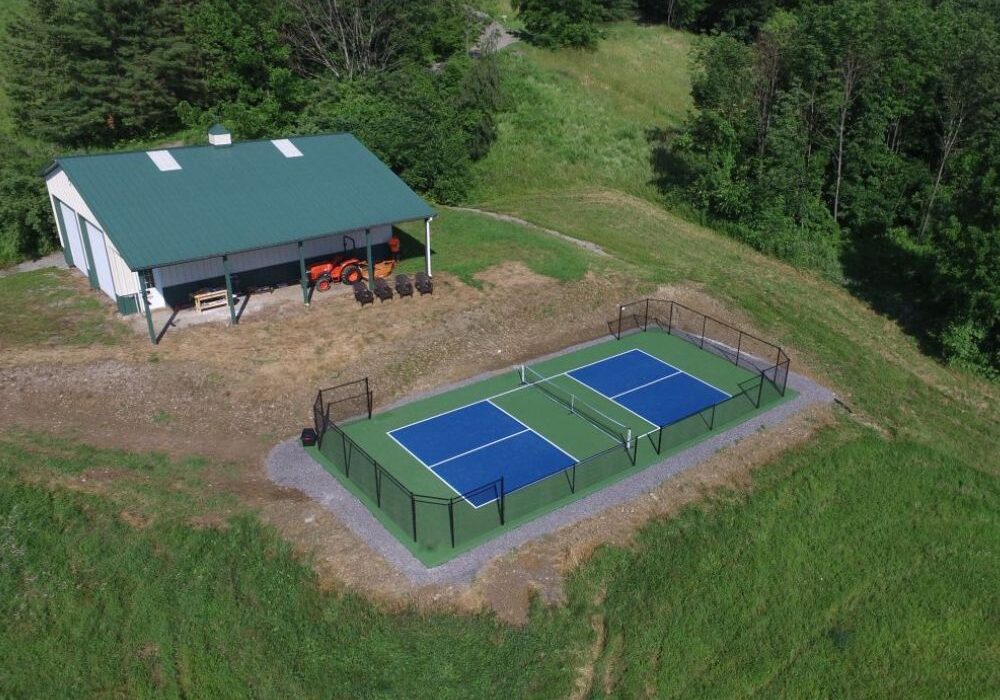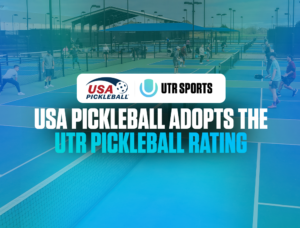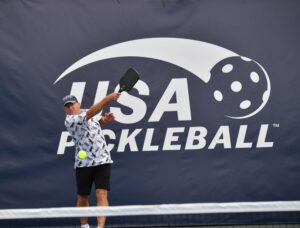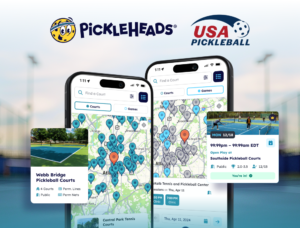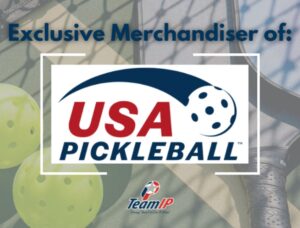When It Comes To Courts, There’s More To A Good Surface Than Meets The Eye
Jeff Gearheart, the director of sports surfaces for SportMaster, shares some insider tips about what makes a good pickleball court. Hint: It starts with the sand.
By Stephen Hunt
Red Line Editorial
Unless there’s an issue, playing surfaces usually aren’t top of mind for the average pickler.
Provided the shots are bouncing properly and they’re not slipping on the court, players’ focus stays where it should be: on their game, not the ground they’re standing on. Of course, this is music to the ears of manufacturers who produce surfaces for pickleball and other sports.
However, a great pickleball court doesn’t just happen. A distinct science and various factors come into play when laying down a surface to ensure it receives a resounding thumbs-up from players. Jeff Gearheart, the director of sports surfaces for SportMaster, a longtime industry leader, shared some of the key factors that go into creating the perfect court surface for any situation.
Perhaps the most important component for any court is what type of sand is used in the mix of materials for coating the surface.
“Sand comes in different sizes,” Gearheart said. “We call it mesh. It comes in different shapes and levels of cleanness. Some has more dust than others.”
For its PickleMaster surface, SportMaster uses clean sand consisting of small, rounded particles that produce minimal dust. This sand is ideal for pickleball courts because it gives the surface texture while still allowing the court to not play terribly aggressive, he said.
Compare this to more angular cuts of sand found in many U.S. courts, which can be harder to play pickleball on due to those surfaces being harder on players and equipment.
“If it’s angular, it’s going to tear up the pickleball,” Gearheart said. “You’ve got a hard, plastic ball that’s hitting it, and if it’s angular, it’s getting chewed up a little much.”
Sand with small, rounded particles grabs the ball better, Gearheart said, and avoids the ball sliding and skipping off the surface.
Using sand with small, rounded particles is ideal in other ways, too.
“The bigger the texture, the light catches it more,” Gearheart said. “To the human eye, it almost makes it look like a different shade. When you have fine, rounded sand, it looks better. It doesn’t grab light as much.”
This, in turn, also help hides the squeegee marks from putting down and maintaining the surface.
“When you’re applying a coating that has bigger, more angular sand, almost like mowing grass you’ll see the rows more,” Gearheart said. “You’ll always see squeegee marks to some extent, but you’ll see way less with finer, rounded sand. It looks better and it’s safer.”
Surfaces utilizing this type of smaller sand are also much safer, Gearheart said, because even when courts are completely damp or partially damp after a rain, the surface will not become overly slippery.
Another big plus of using a surface like PickleMaster, which employs sand with smaller, round particles, is that those surfaces also help extend the lifespan of courts.
“(The sand) is fine enough to where it seems like most players really like it,” Gearheart said. “If you get something that’s too aggressive, like an angular cut (or sand) with larger grit, you’ll see (those surfaces) get marked up a lot quicker, and it’s grabbing your foot more too. Those angular pieces are grabbing the shoe rubber. That can also affect you if you’re moving quickly and don’t lift your foot quick enough. It can trip you up a little bit if it’s too aggressive.”
Court surfaces can also be installed with cushion surfaces under the color coatings, additions with a simple purpose that only minimally impact play.
“That can make the surface a little softer but not enough to change the ball bounce,” Gearheart said. “We want to make sure it still rebounds the ball in a good way.”
Another important factor to consider with any surface is color, as ideal options vary according to climate. Choosing a light color like beige, gray, green or red for a court in a warm climate where summer heat can be stifling can lower court temperatures by 30 to 40 degrees compared to using a darker color like black, dark green or dark blue.
Somewhat related to court color is the concept of ball contrast, where the surface color needs to be complementary of the ball so that players can see the ball clearly.
“When considering a color, think about ball contrast. Colors that are across from each other (on the color wheel) are easier to see when there’s a contrast,” Gearheart said. “Your eye can catch the ball a lot better over a different contrasting surface. If you want the best view of the ball, get (a color) that’s opposite in contrast and then you’ll know that’ll be the best for viewing and playing pickleball.”
Stephen Hunt is an accomplished freelance writer and sports statistician who has been blessed to cover a multitude of subjects and sports in his time. He is a freelance contributor to USA Pickleball on behalf of Red Line Editorial, Inc.

